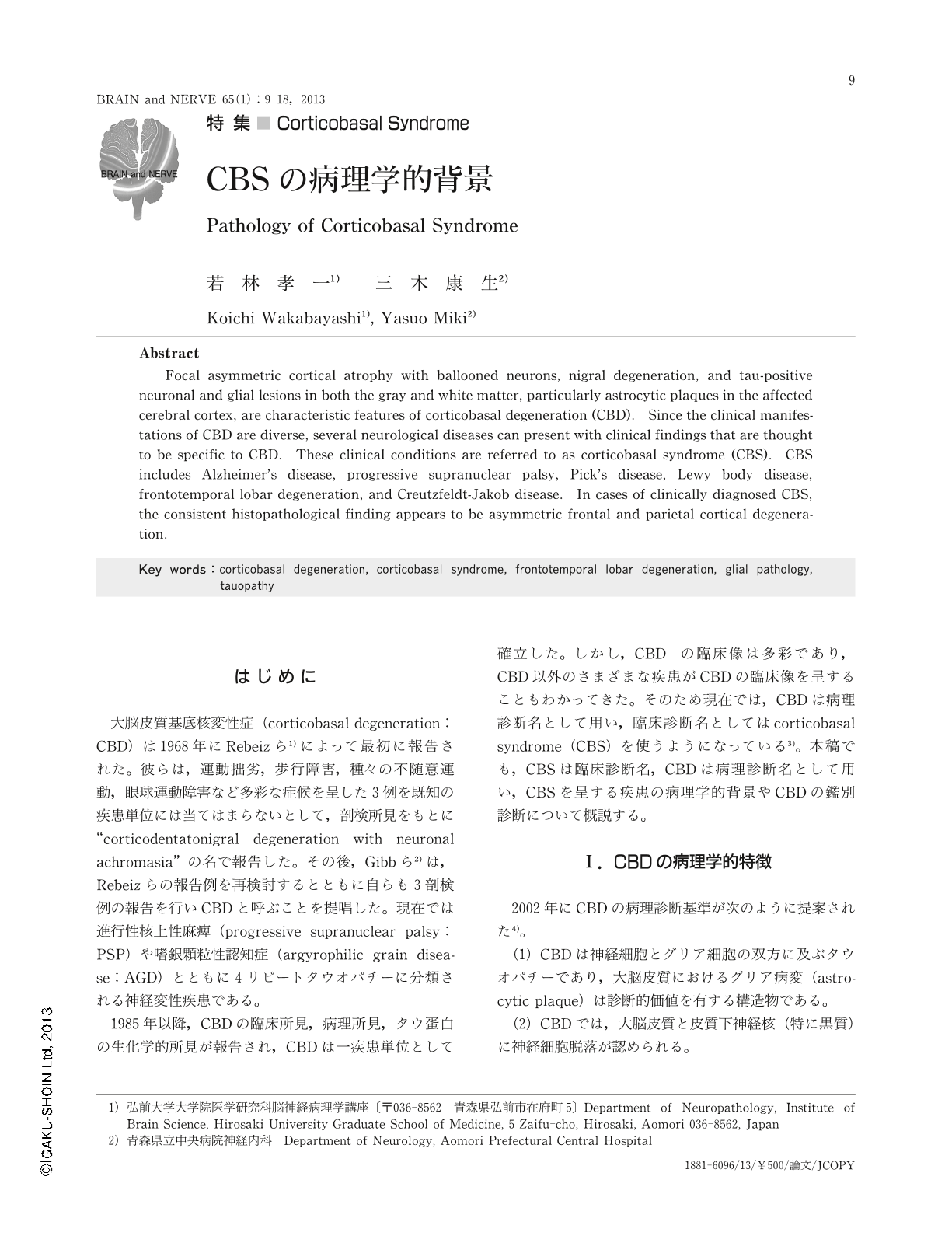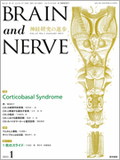Japanese
English
- 有料閲覧
- Abstract 文献概要
- 1ページ目 Look Inside
- 参考文献 Reference
はじめに
大脳皮質基底核変性症(corticobasal degeneration:CBD)は1968年にRebeizら1)によって最初に報告された。彼らは,運動拙劣,歩行障害,種々の不随意運動,眼球運動障害など多彩な症候を呈した3例を既知の疾患単位には当てはまらないとして,剖検所見をもとに“corticodentatonigral degeneration with neuronal achromasia”の名で報告した。その後,Gibbら2)は,Rebeizらの報告例を再検討するとともに自らも3剖検例の報告を行いCBDと呼ぶことを提唱した。現在では進行性核上性麻痺(progressive supranuclear palsy:PSP)や嗜銀顆粒性認知症(argyrophilic grain disease:AGD)とともに4リピートタウオパチーに分類される神経変性疾患である。
1985年以降,CBDの臨床所見,病理所見,タウ蛋白の生化学的所見が報告され,CBDは一疾患単位として確立した。しかし,CBDの臨床像は多彩であり,CBD以外のさまざまな疾患がCBDの臨床像を呈することもわかってきた。そのため現在では,CBDは病理診断名として用い,臨床診断名としてはcorticobasal syndrome(CBS)を使うようになっている3)。本稿でも,CBSは臨床診断名,CBDは病理診断名として用い,CBSを呈する疾患の病理学的背景やCBDの鑑別診断について概説する。
Abstract
Focal asymmetric cortical atrophy with ballooned neurons, nigral degeneration, and tau-positive neuronal and glial lesions in both the gray and white matter, particularly astrocytic plaques in the affected cerebral cortex, are characteristic features of corticobasal degeneration (CBD). Since the clinical manifestations of CBD are diverse, several neurological diseases can present with clinical findings that are thought to be specific to CBD. These clinical conditions are referred to as corticobasal syndrome (CBS). CBS includes Alzheimer's disease, progressive supranuclear palsy, Pick's disease, Lewy body disease, frontotemporal lobar degeneration, and Creutzfeldt-Jakob disease. In cases of clinically diagnosed CBS, the consistent histopathological finding appears to be asymmetric frontal and parietal cortical degeneration.

Copyright © 2013, Igaku-Shoin Ltd. All rights reserved.


